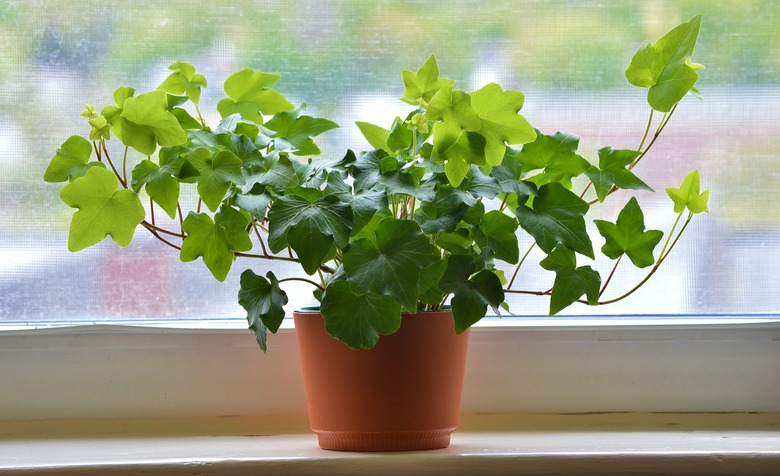How To Identify Types Of House Ivy Plants
We may receive a commission on purchases made from links.
The most popular ivy houseplant is English ivy (Hedera helix, USDA hardiness zones 4-11), which exists in dozens of cultivars. Other ivy species can be identified based on their leaf shapes and other physical characteristics. Because so many ivy species exist — plus plenty of lookalikes — it's best to use a tool called a dichotomous key to identify a particular plant.
Different Types of English Ivy
Different Types of English Ivy
English ivy is one of the most popular ivy houseplants, but it's considered invasive in the U.S. and shouldn't be grown outdoors. Cultivars can look quite different based on leaf color, but English ivy leaves always have an alternate arrangement on the stem (leaf petioles do not appear directly across from one another). Its leaves are also smooth (not fuzzy) with smooth edges (no teeth) and three or five lobes. English ivy produces a small, round white flower and a round black berry.
The lobes on Hedera helix 'Arborescens' are less distinct than those of other cultivars, making its glossy green leaves look almost oval. Hedera helix 'Glacier' stands out due to its blotchy white and green leaves. Hedera helix 'Midas Touch' has yellow splotches along its leaf veins, whereas Hedera helix 'Gold Child' has the opposite coloring, with yellow on the leaf edges.
Many other cultivars exist. Look at images on the American Ivy Society website or in a nursery database for help identifying a particular variety.
Identifying Other Common Ivy Species
Identifying Other Common Ivy Species
Other ivy species include Irish ivy (Hedera hibernica, zones 5-9), Persian ivy (Hedera colchica, zones 5-9), Japanese ivy (Hedera rhombea, zones 8-9), Russian ivy (Hedera pastuchovii, zones 5-9), Nepal ivy or Himalayan ivy (Hedera nepalensis, zones 7-10) and many more that aren't commonly grown in the U.S.
Irish ivy and English ivy look almost identical at first glance, but there are some key differences. Irish ivy leaves are wider than they are long and grow larger than the typical English ivy leaf. Irish ivy leaf veins take on a green versus white tint, and their flowers are yellow instead of white. Experts can even tell these two plants apart based on their fragrance: Irish ivy reportedly has a sweeter aroma than English ivy.
Persian ivy has heart-shaped, leathery leaves with small, almost imperceptible teeth on the margins. To identify Japanese ivy, take a look at the stems: They're purple or red and support three-lobed leaves. Russian ivy's leaves stand out due to their very long, lance-shaped leaves with two lobes at the base. Nepal ivy forms two distinct types of leaves, both of which are gray-green and heart-shaped: the juvenile leaf has a more triangular shape, whereas the tip of the adult leaf grows longer.
Use a Dichotomous Key
Use a Dichotomous Key
A dichotomous key is a fancy word for a plant identification tool. In the same way that you can filter products in online stores based on certain characteristics, a dichotomous key will show you only the species that match the criteria you choose. No two species are exactly alike, so you can pinpoint the ivy plant you're looking at by accurately answering enough questions about its physical characteristics.
Dichotomous keys are easiest to use if you have the plant nearby for reference. You may need to look up some definitions to accurately answer each question, but many keys provide explanations to help you. Organizations like Native Plant Trust, the United States Department of Agriculture and many universities publish dichotomous keys online.
Technology can also provide assistance. Mobile apps — some of which may require purchase — allow you to take a picture of a plant's leaves to obtain a list of possible matches. You can also use Google Lens to upload a picture and return matching images from around the web.
